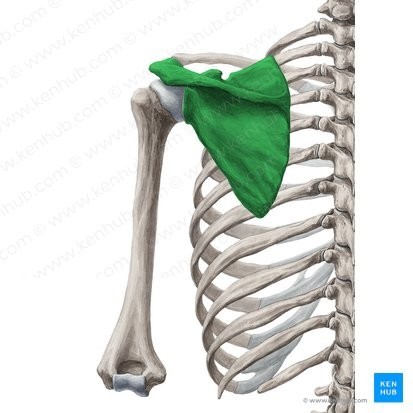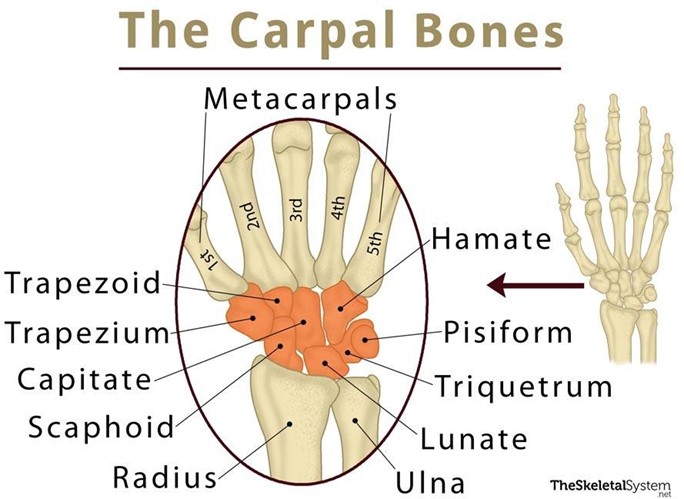Which of the following bones is NOT part of the axial skeleton?
Sacrum.
Hyoid.
Ribs.
Scapula.
The Correct Answer is D
The scapula is a flat bone that forms part of the shoulder girdle and belongs to the appendicular skeleton.
The appendicular skeleton consists of the bones of the limbs and the girdles that attach them to the axial skeleton.

Choice A is incorrect because sacrum is a triangular bone that forms the posterior part of the pelvic girdle and belongs to the axial skeleton.
The axial skeleton consists of the bones of the head and trunk of a vertebrate.
Choice B is incorrect because hyoid is a U-shaped bone that lies in the anterior neck and belongs to the axial skeleton.
The hyoid bone supports the tongue and provides attachment for some muscles of swallowing and speech.
Choice C is incorrect because ribs are long curved bones that form the rib cage and belong to the axial skeleton.
The ribs protect the thoracic organs and assist in breathing.
Nursing Test Bank
Naxlex Comprehensive Predictor Exams
Related Questions
Correct Answer is ["Ulna bone"]
Explanation
The ulna is one of the two bones of the forearm, located on the medial (inner) side of the arm.
It is a long bone that runs parallel to the radius bone, extending from the elbow joint to the wrist joint.
The ulna features several surface landmarks, including the olecranon process, which forms the bony tip of the elbow.
The bone is also involved in the formation of the elbow joint, where it articulates with the humerus bone, and the wrist joint, where it articulates with the radius bone and several carpal bones.
The ulna is an important site for the attachment of muscles involved in forearm and wrist movements.
Correct Answer is ["Scaphoid bone"]
Explanation

The carpal bones, also known as the wrist bones, are a group of eight small bones located in the wrist joint.
They are arranged in two rows of four bones each, with the rows separated by a space known as the carpal tunnel.
The carpal bones are held together by ligaments, and their shape and arrangement allow for a wide range of wrist movements.
The names of the carpal bones, from the proximal row to the distal row, are the scaphoid, lunate, triquetrum, and pisiform, and the trapezium, trapezoid, capitate, and hamate.
Each bone has a unique shape and surface features that allow it to articulate with adjacent bones, forming a complex network of joints that are important for wrist and hand movements.
The carpal bones are important because they provide stability to the wrist joint, allowing for precise movements of the hand and fingers.
They also help to transfer forces from the hand to the forearm, and vice versa.
Injuries to the carpal bones can result in wrist pain, instability, and decreased function of the hand and fingers.
Additionally, the arrangement of the carpal bones can affect the function of the median nerve, which runs through the carpal tunnel.
Compression or irritation of this nerve can result in carpal tunnel syndrome, a condition characterized by pain, numbness, and tingling in the hand and fingers.
Whether you are a student looking to ace your exams or a practicing nurse seeking to enhance your expertise , our nursing education contents will empower you with the confidence and competence to make a difference in the lives of patients and become a respected leader in the healthcare field.
Visit Naxlex, invest in your future and unlock endless possibilities with our unparalleled nursing education contents today
Report Wrong Answer on the Current Question
Do you disagree with the answer? If yes, what is your expected answer? Explain.
Kindly be descriptive with the issue you are facing.
